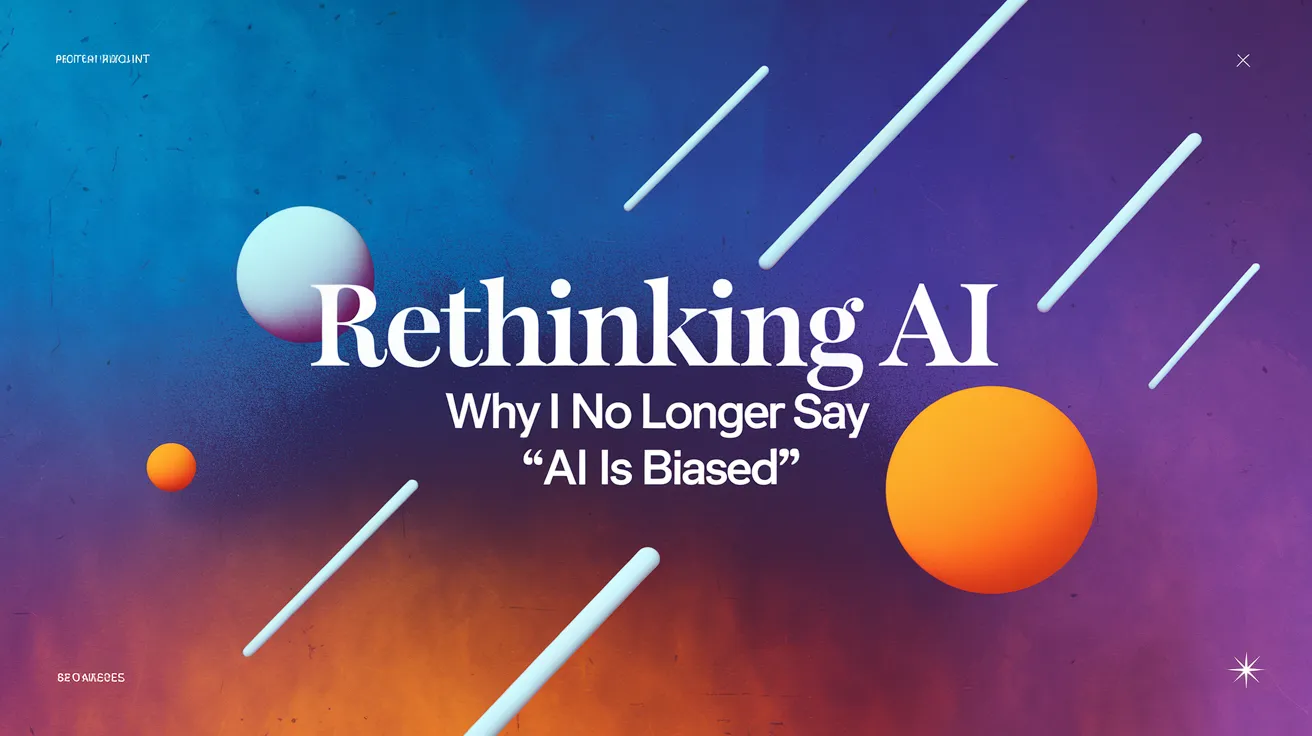Rethinking AI: Why I No Longer Say “AI is Biased”

Over the past two years, I have frequently expressed that “AI is biased” during lessons and at conferences. However, I’ve recently altered my approach. As a journalist, precision in language is crucial, and I now believe that calling AI “biased” is a careless phrase that is often employed without a true grasp of its implications.
While it’s true that AI can reflect biases, this does not convey the meaning most people associate with the term “bias.” Human biases arise from individual beliefs, experiences, and motivations; a business owner might show bias to sell products, while a campaigner might be biased toward enacting change. Equating this with AI inaccurately attributes intentions to technologies lacking consciousness and motives.
Understanding AI Bias
So when we claim “AI is biased”, what we actually mean is that the output of AI reflects the biases present in its training data. These biases are seeded through two primary factors: the power dynamics governing who generates online content, and selection bias based on which sources are favored for training. Similar issues can arise in surveys or clinical research, but we typically do not say that “the survey is biased”; rather, we might point out margins of error or the low representation of specific demographic groups.
This means a more effective approach when discussing AI would be to refer to the plural “biases” of AI or identify the “biased training” it undergoes. This distinction is critical for resisting the tendency to anthropomorphize AI systems.
Addressing AI’s Non-Human Biases
It is essential to highlight that AI biases are fundamentally not human-like. Human biases are often deeply entrenched and can be difficult to confront. In contrast, AI models can recalibrate their outputs according to user requests. For instance, if an AI model exhibits bias, it can follow directives to implement principles of fairness and diversity. Generative AI also encounters unique biases such as temporal biases, which arise when models operate with knowledge limited to their training cut-off, leading to outdated information.
Treating algorithms like inputs into a shopping trolley can provide a helpful analogy: we identify and correct their inherent biases just as we would with a trolley that veers off track. Generative AI leverages existing biases that users must account for when utilizing the technology.
Three Forces Driving AI Bias
The issue of bias in AI emerges from three primary forces: the training data, the design of the algorithm, and user inputs. For example, if Google Gemini is prompted to produce harmful content, it will refuse, reflecting its underlying corrective mechanisms rather than a flaw in its training data.
Crucially, biases are not inherently negative. A bias towards accuracy and fairness, for example, is beneficial and often applied by journalists to mitigate less constructive human biases. The efforts to steer AI in the right direction can serve as useful corrections to our subjective biases.
Emphasizing Solutions Over Problems
By framing AI biases as products of biased training and data, we can concentrate on solutions. This perspective transforms AI from an animated character to a functional tool, reinforcing the responsibility surrounding its application. It emphasizes human agency and encourages us to shape AI outputs, thus shifting the focus from AI as the subject to the biases and training that generate its outputs.
Ultimately, changing the phraseology regarding AI biases can significantly reshape our understanding and discussions on the subject, fostering a more productive dialogue focused on creating solutions rather than getting mired in blame or anthropomorphism.